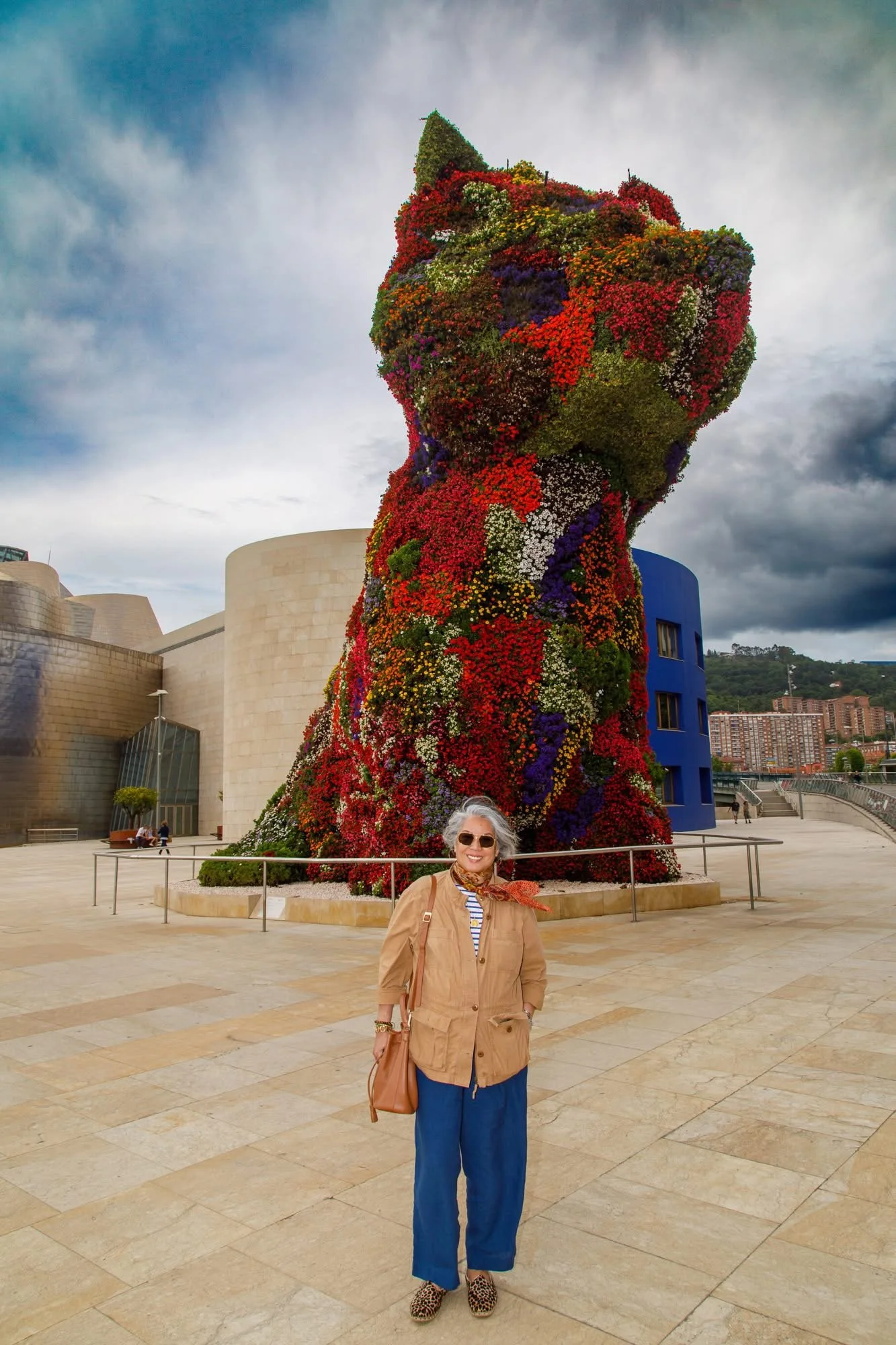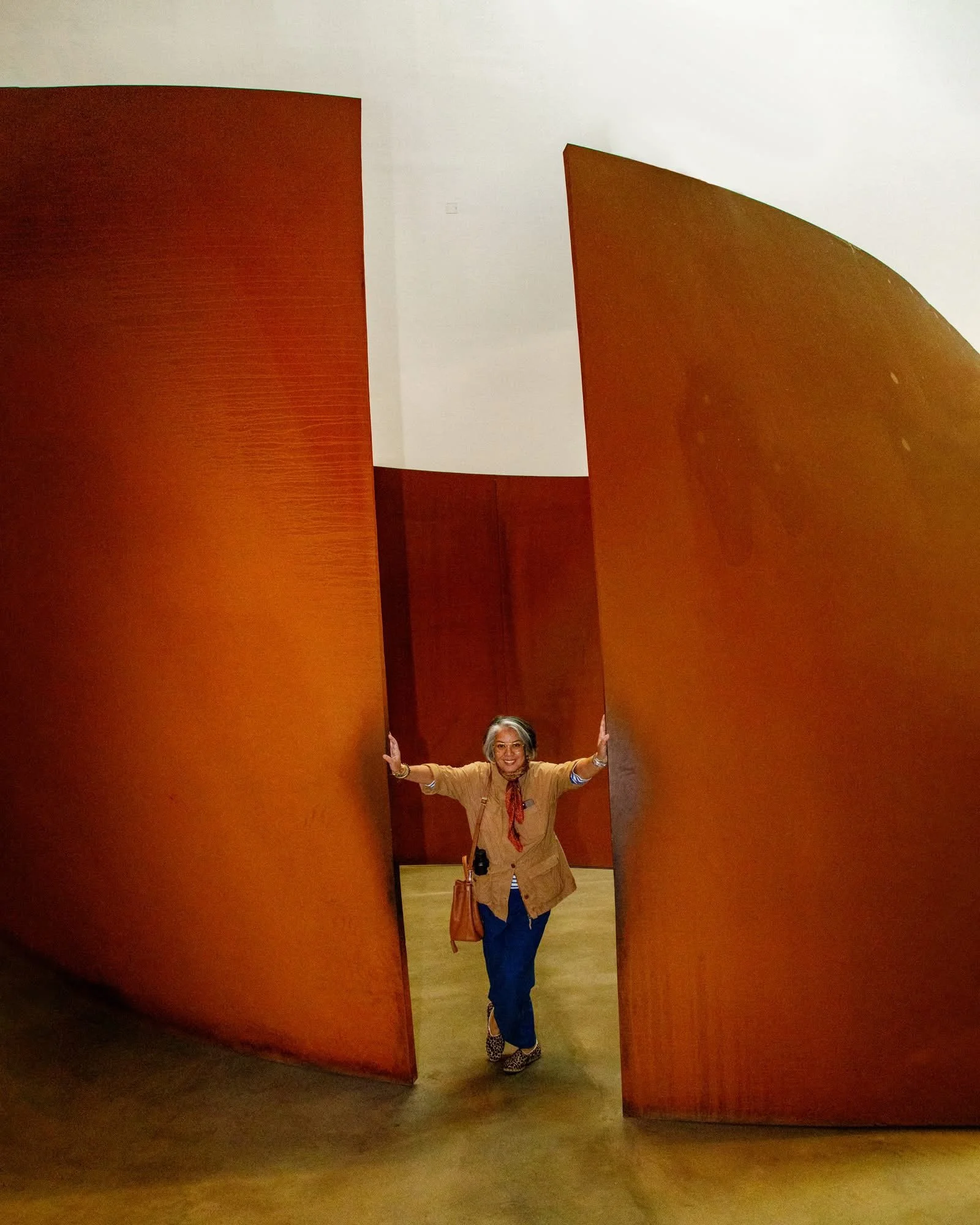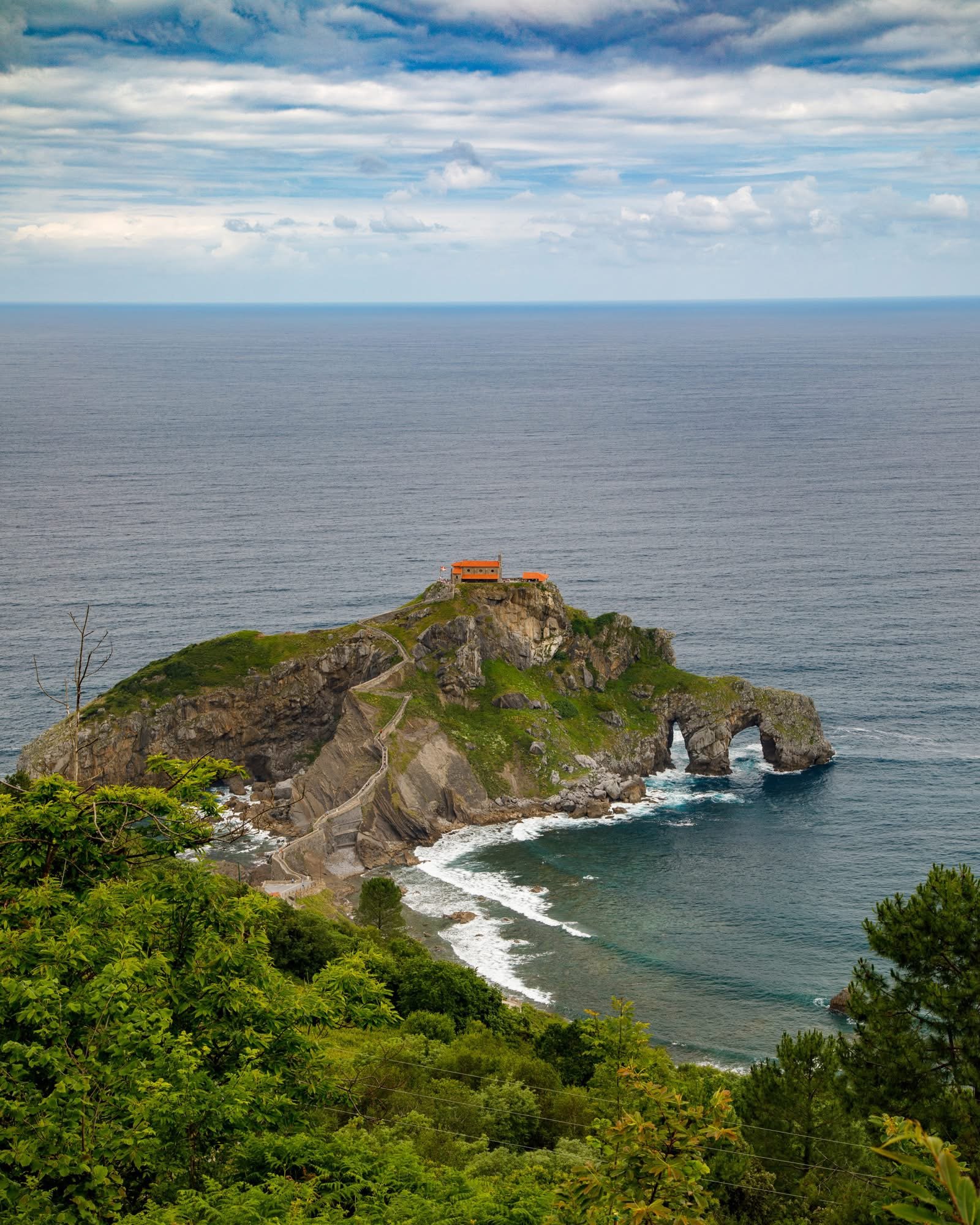—A slow and savory journey through the soul of Northern Spain, told through food, art, and the winding roads that connect them.
Guggenheim Museum Bilbao - Photo Credit: Michael Girman
A Phrase to Travel By
I first visited Bilbao in the 1980s—pre-Guggenheim, pre-Bourdain. While my then-beau rehearsed with the Bilbao Opera, I wandered the city solo. It was gritty, authentic, and entirely unconcerned with charm. When I asked a local where to eat, he shrugged and said simply, “Anywhere is Good.” Not a recommendation, not a list. Just a quiet kind of assurance that wherever I ended up, it would be good.
Decades later, I returned. The world had discovered Bilbao in the meantime, and the city had undergone a transformation that still feels miraculous. The Guggenheim Museum Bilbao now stands like a ship of the future moored along the Nervión River—a beacon of cultural rebirth. What foresight, what audacity, the city’s leaders had to anchor their future to a titanium-clad dream by Frank Gehry. It worked. The Guggenheim didn’t just change the city—it reimagined it. Today, Bilbao feels like a masterclass in reinvention: modern, proud, rooted.
And yet, “anywhere is good” still holds.
Bilbao: Steel, Salt, and Soul
I arrived in Bilbao after a delayed flight from Madrid. You’d think the weariness would dull the moment, but not when someone like Iñigo is waiting just outside the jetway with a sign bearing your name. I do love being welcomed into a destination this way—it feels cinematic, like the opening scene of a film you’ve been waiting to see. Iñigo, along with his colleague Ricardo, would become our trusted drivers over the next twelve days—quietly stitching together the corners of our Basque and Northern Spain adventure with warmth, professionalism, and uncanny timing.
As I often do, I planned this journey for myself first, then extended the invitation to friends. Curiosity is best when shared. Frank and I arrived a day ahead of the group to settle in and explore, basing ourselves at The Artist Grand Hotel, directly across from the Guggenheim. And when your room has a view of Jeff Koons’ Puppy, what more can you ask for? The rooftop terrace is a delight—perfect for a sunset spritz or a lingering breakfast—and the hotel’s signature restaurant, Olio, offers a quiet, confident take on modern Basque cuisine.
Jeff Koon’s “Puppy” - Photo Credit: Michael Girman
The next day, once the group had assembled, we relocated to the more centrally located Radisson Collection Hotel. Its rooftop restaurant, Eneko Basque, serves beautifully composed dishes designed by Michelin-starred chef Eneko Atxa—elevated Basque flavors paired with panoramic views.
With everyone gathered, we made our way to the Guggenheim. The artwork—outside and in—still stuns. I was especially drawn to Jenny Holzer’s LED installation For Bilbao, a hypnotic stream of language and light. When I confessed to our guide that I didn’t quite “get” Richard Serra, she smiled and said, “Don’t try to understand it. Just experience it.” And so I did. Walking through The Matter of Time, I let myself notice the shifting space, the echo of footsteps, the way steel curved around silence. Somewhere in that moment, it clicked—not intellectually, but viscerally. I didn’t just enjoy it. I understood it.
Later that day, while wandering through the Casco Viejo, Bilbao’s old quarter, we turned into a square alive with song. A group of locals had gathered, unamplified and unrehearsed, singing Basque nationalistic songs. Their harmonies rose like incense into the air—nostalgic, fervent, proud. Even in this sleek, walkable, quietly cosmopolitan city, the Basque identity pulses strong and steady.
Salt Air & Stone Paths: A Day on the Coast
On a glorious day trip along the Basque Coast, we made the pilgrimage to San Juan de Gaztelugatxe, better known to some as Dragonstone from Game of Thrones. The climb to the hermitage—perched atop a rocky islet and accessible by 241 winding stone steps—was as cinematic as it was sacred. The views at the summit? Worth every breath.
San Juan de Gaztelugatxe - Photo Credit: Michael Girman
Afterwards, we made our way through vine-covered hills to Doniene Gorrondona, where we sipped crisp txakolí as the sea shimmered in the distance. Then it was inland to Kamiñoko in Gernika for lunch. At first, the packed parking lot gave us pause. But once inside, we realized it was a Sunday—and the restaurant was filled with local families gathering for their weekly meal. We were the only tourists. Around tables lined with salt-kissed tomatoes and wood-grilled meats, we tasted a kind of rustic refinement that made it one of the standout meals of our trip.
With full hearts and fuller bellies, we visited the Casa de Juntas, the historic seat of Basque democracy. There, we stood before the haunting replica of Picasso’s Guernica, a stark reminder of the town’s tragic past—and a powerful reflection of its resilience. In that moment, the lines between art, history, and memory blurred—and lingered.
Time & Salt: A Journey Inward
The following day took us inland to Vitoria-Gasteiz, the capital of the Basque Country. Beautifully preserved and blissfully under the radar, this medieval city is a true hidden gem. At its center rises the Cathedral of Santa María, a haunting Gothic marvel that inspired Ken Follett’s Pillars of the Earth. Its scaffolds and transparent floors reveal centuries of buried stories. The 90-minute tour led us deep into its foundations—and high into the belfry. As I climbed the spiral stairs, I half expected to bump into Quasimodo.
Later, we continued to the Salt Valley of Añana, a place I hadn’t expected to move me so deeply. Terraced and starkly beautiful, these salt flats have been harvested by hand for over 7,500 years. Walking across the crisp white platforms, I felt a reverence for the quiet persistence of time—and for the people who’ve shaped and been shaped by this land. Naturally, I couldn’t resist bringing home a few jars of Fleur de Sel from Añana—a small souvenir with a big story.
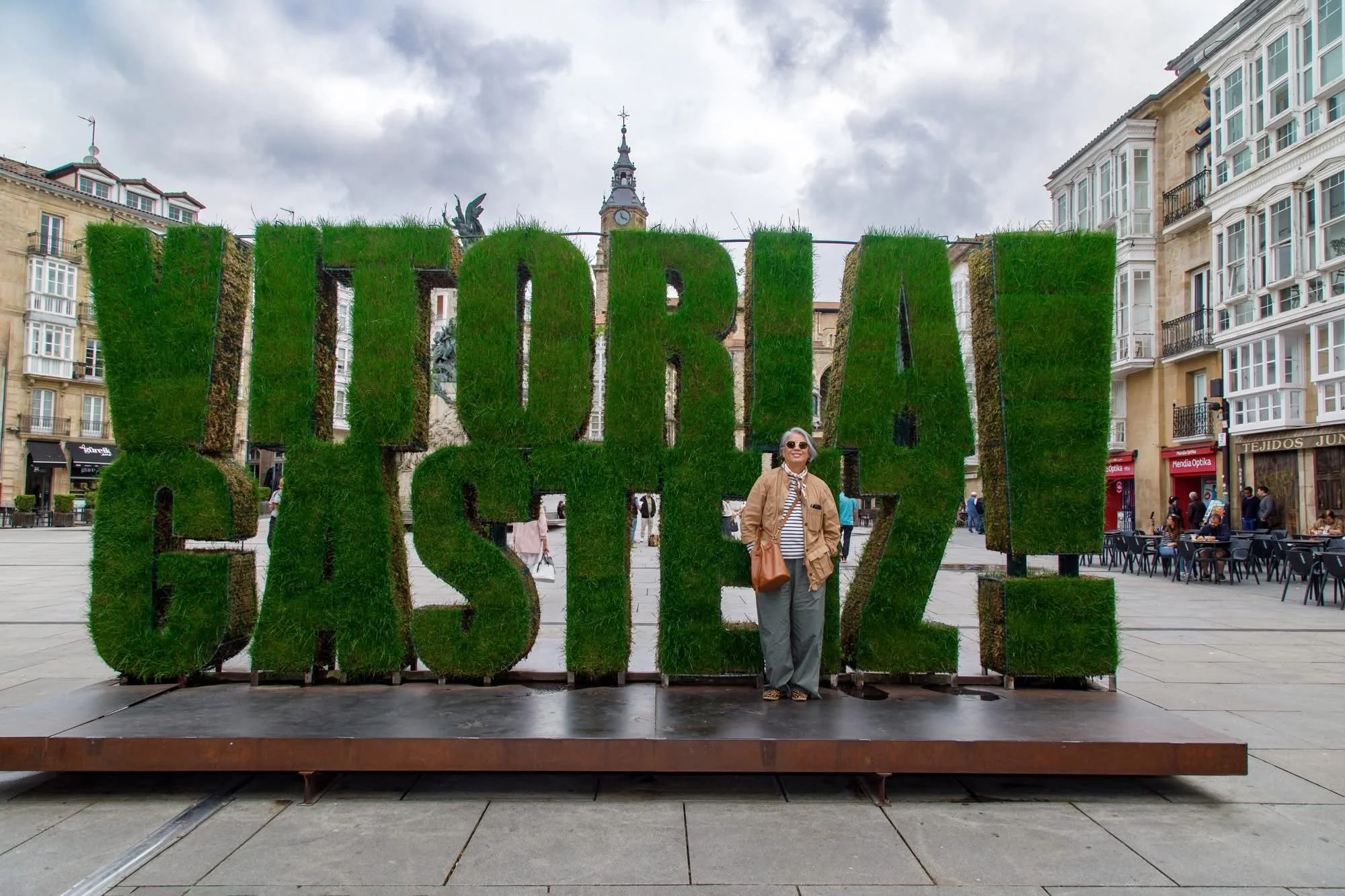

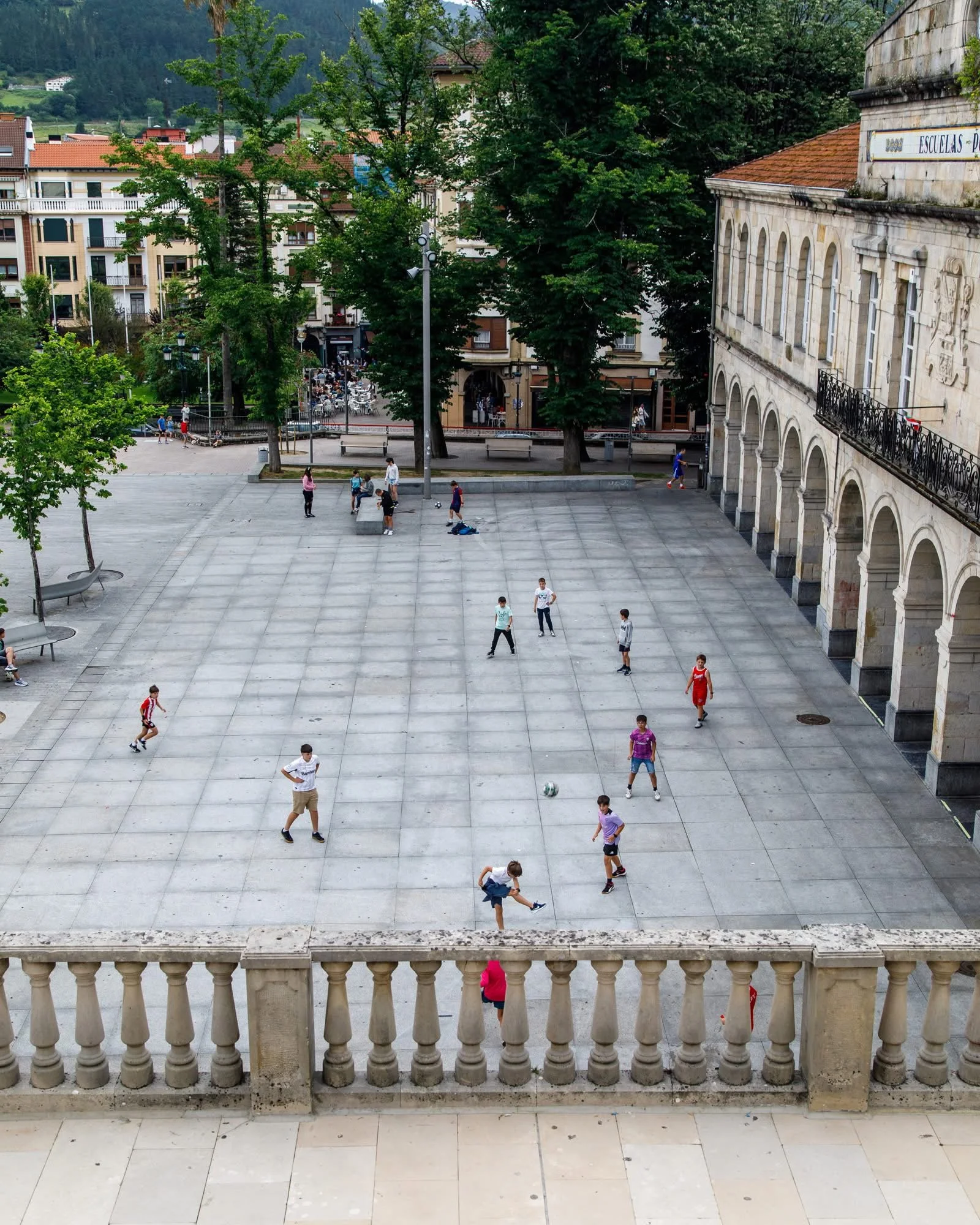

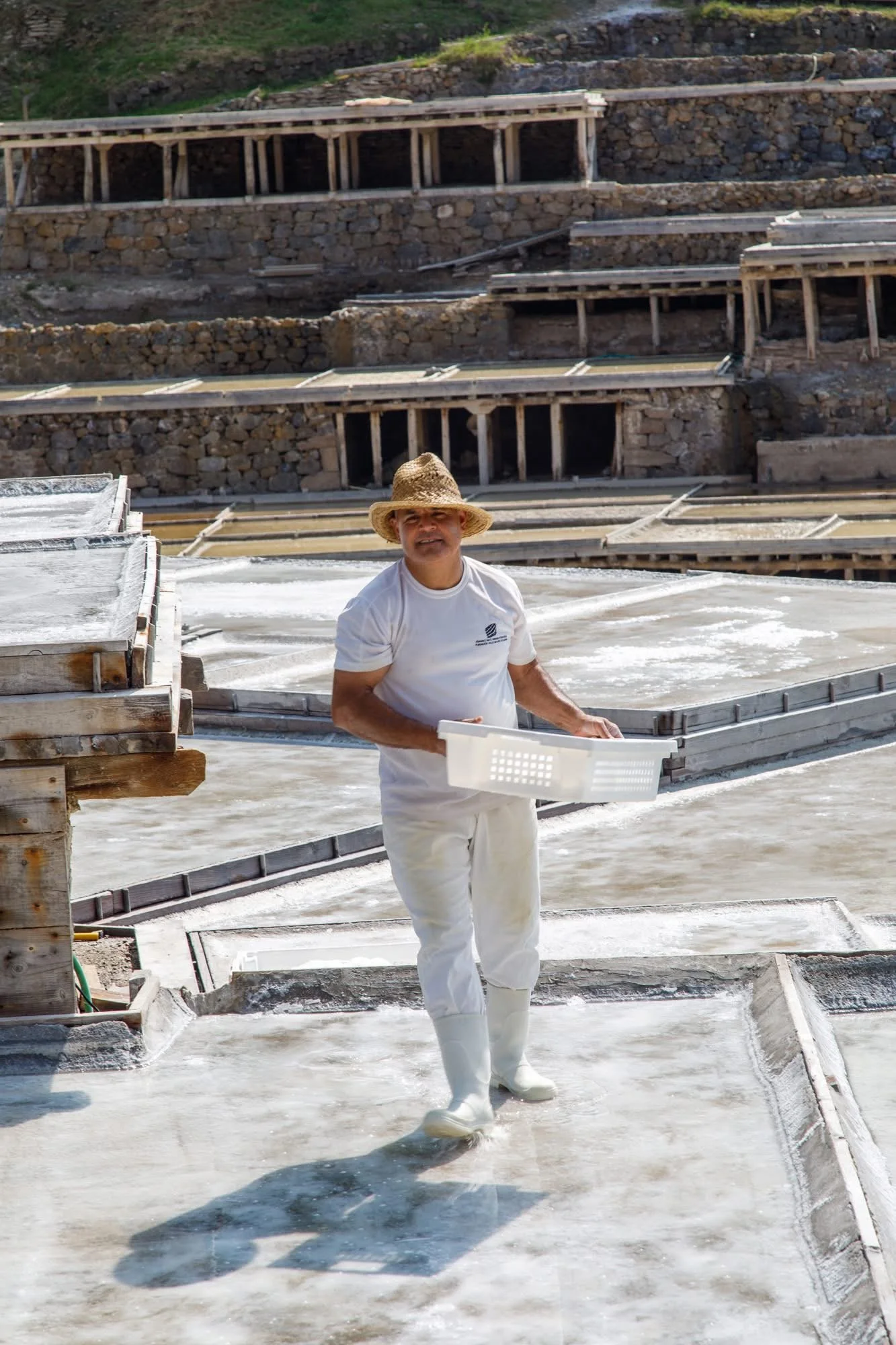

Bilbao may be the city that changed the most, but its essence remains the same: proud, salty, soulful—and still a place where “anywhere” is more than good. It’s exceptional.



